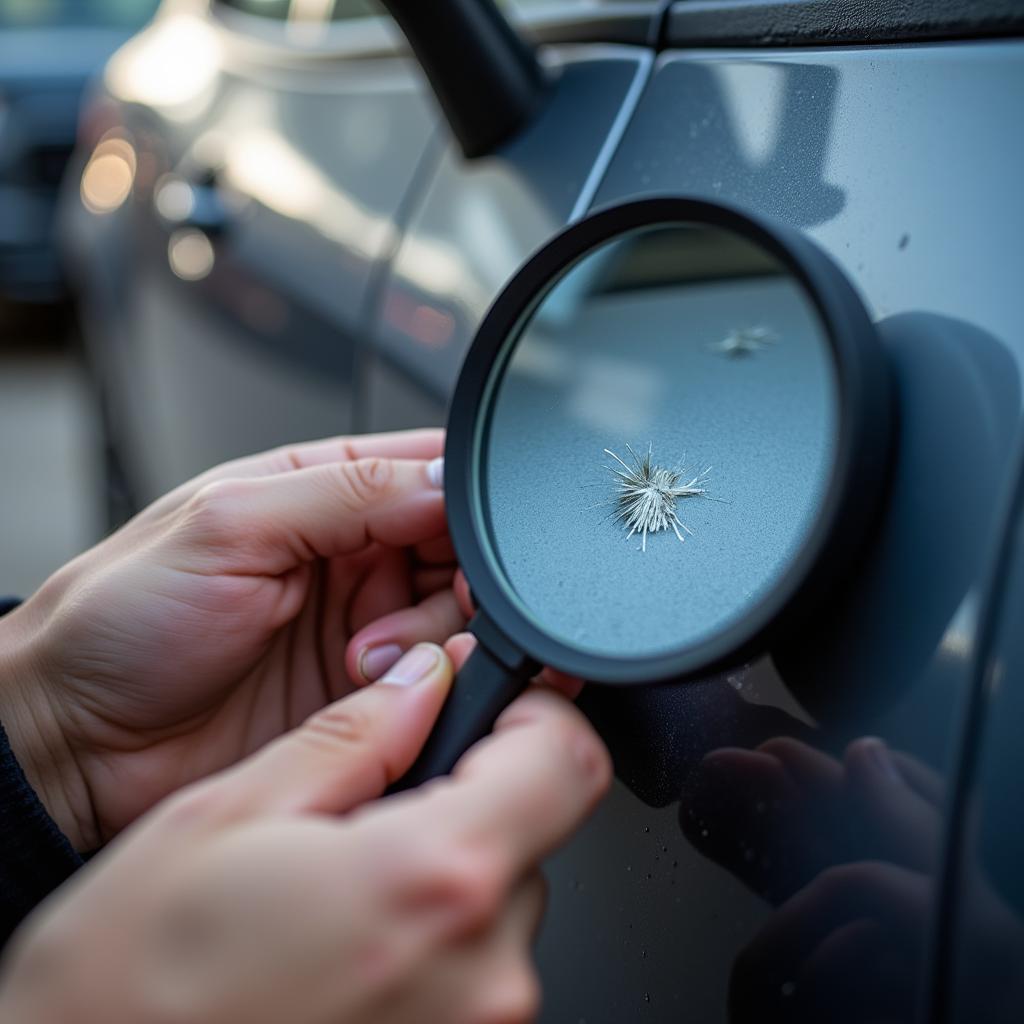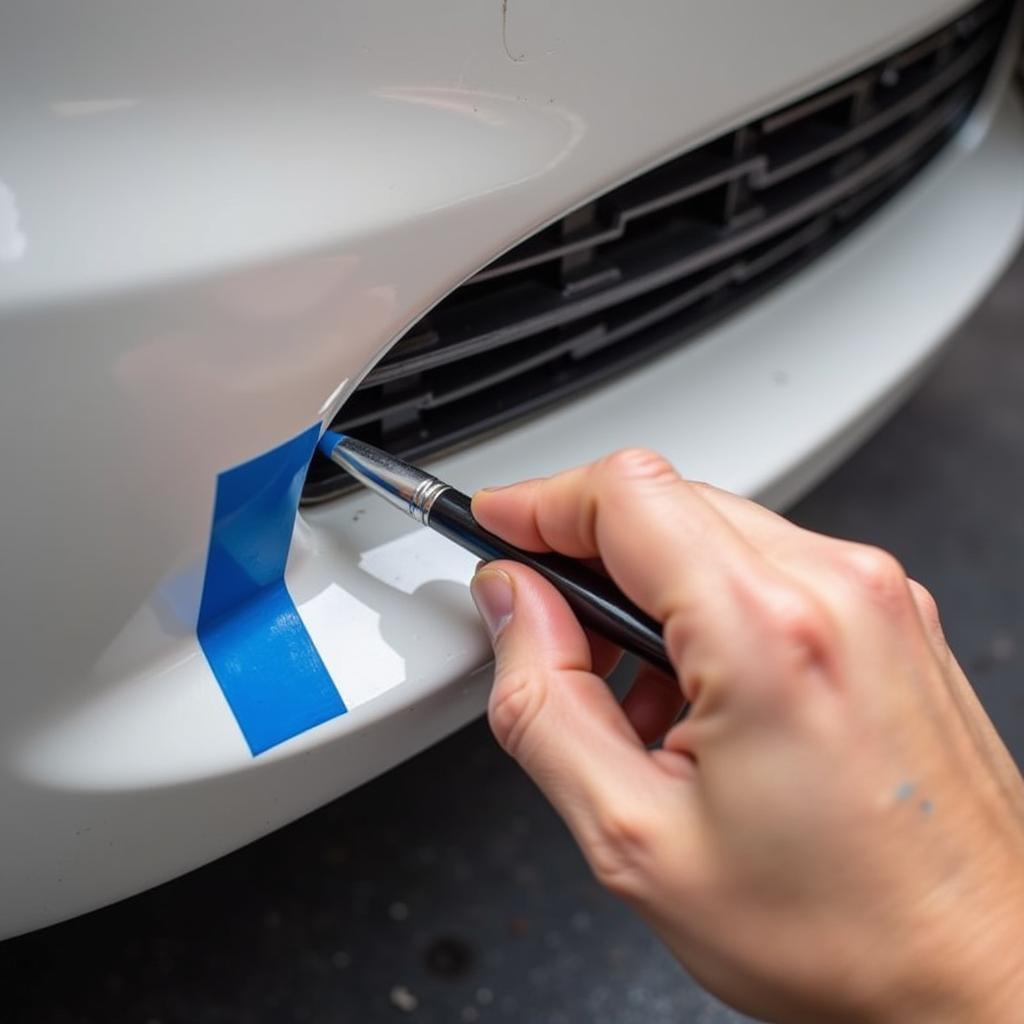Touching up minor paint chips and scratches on your car can make a big difference in its appearance. This guide will walk you through how to paint a small detail in your car, providing professional tips and techniques to achieve a seamless repair. Whether it’s a stone chip on the hood or a scratch on the door, learning how to address these small imperfections can save you money and keep your car looking its best.
Understanding the Importance of Small Paint Repairs
Small paint chips might seem insignificant, but they can lead to bigger problems down the road. Exposed metal is vulnerable to rust, which can spread and compromise the structural integrity of your car. Addressing these small details early can prevent costly repairs later. Properly repairing minor damage also maintains your car’s resale value. A well-maintained vehicle always commands a better price. Similar to how much are car details, small paint repairs are an investment in the long-term health and value of your vehicle.
Assessing the Damage
Before you start, assess the extent of the damage. Is it a shallow scratch, a deep chip, or a scuff? The type of damage will determine the best approach to repair. For very superficial scratches, you might only need a polishing compound. Deeper scratches and chips will require paint.
 Assessing Car Paint Damage for Small Repairs
Assessing Car Paint Damage for Small Repairs
Gathering Your Supplies
For a DIY small paint repair, you’ll need a few essential supplies. This includes touch-up paint that perfectly matches your car’s colour, primer (if the chip has reached the metal), fine-grit sandpaper, rubbing compound, polishing compound, masking tape, and applicator tools such as a fine-tipped brush or a touch-up pen. Choosing the right tools is key to a successful repair. Just as with how to detail cars for money, having the proper equipment makes all the difference.
Preparing the Area
Clean the area around the damage thoroughly with soap and water, then dry it completely. Use masking tape to protect the surrounding paint from overspray or accidental scratches during the repair process. If the chip has exposed bare metal, apply a thin coat of primer to prevent rust.
Applying the Touch-Up Paint
Apply the touch-up paint carefully to the damaged area. For small chips, use a fine-tipped brush or a touch-up pen to apply thin layers of paint, allowing each layer to dry completely before applying the next. For scratches, use a smooth, even stroke to fill in the scratch. Remember, less is more. It’s better to apply multiple thin coats than one thick coat. This concept is similar to the layered approach in how detail a car.
 Applying Touch-Up Paint to a Small Car Scratch
Applying Touch-Up Paint to a Small Car Scratch
Sanding and Polishing
Once the paint is completely dry, which might take a few days, use fine-grit sandpaper to carefully level the repaired area with the surrounding paint. This step requires patience and a light touch. After sanding, use rubbing compound followed by polishing compound to blend the repair and restore the shine to the paintwork. Much like the finishing touches in what do professional car detailers use, polishing is crucial for a flawless look.
Final Touches and Inspection
After polishing, inspect the repair in different lighting conditions to ensure a seamless blend. Wax the area to provide extra protection and further enhance the shine.
Conclusion
Knowing how to paint a small detail in your car is a valuable skill for any car owner. By addressing minor paint imperfections promptly and effectively, you can protect your car from rust, maintain its value, and keep it looking its best. Just as detailing the entire car is important, so is paying attention to these smaller details. This ties in with the overall car maintenance principles discussed in how to detail a car detailing world.
FAQ
- How long does touch-up paint take to dry? Typically, touch-up paint takes 24-48 hours to fully dry.
- Can I use any type of paint for touch-ups? No, you should always use touch-up paint specifically designed for cars and matched to your car’s colour code.
- What if the scratch is very deep? For very deep scratches, it’s best to consult a professional.
- Do I need to use primer? Primer is necessary if the chip has exposed bare metal.
- How often should I wax my car after a touch-up? Waxing the repaired area after a few weeks is recommended.
- Can I wash my car immediately after a touch-up? It’s best to wait at least 48 hours before washing your car after a touch-up.
- Where can I find my car’s paint code? The paint code is usually located on a sticker inside the driver’s side doorjamb or in the owner’s manual.
Need help? Contact us via WhatsApp: +1(641)206-8880, or Email: [email protected]. We offer 24/7 customer support.

Leave a Reply